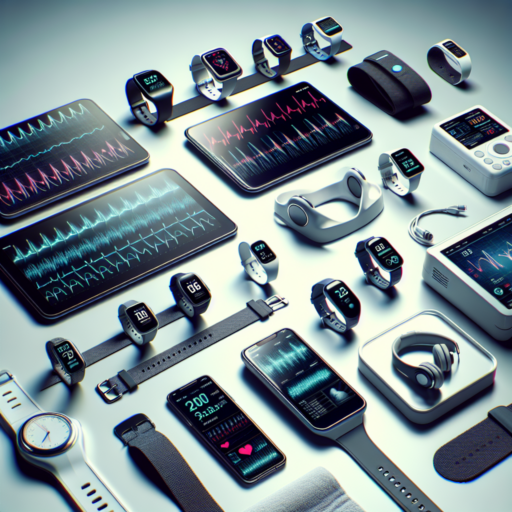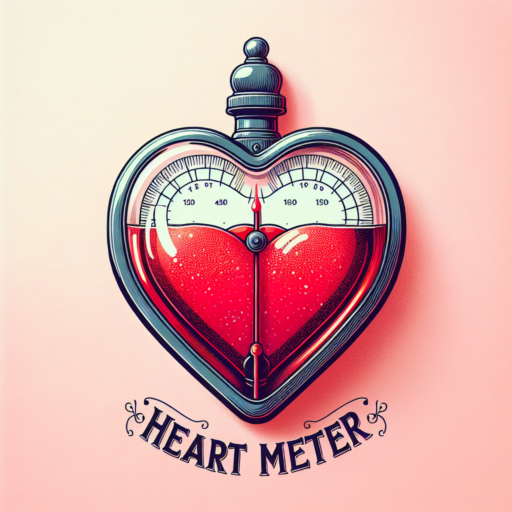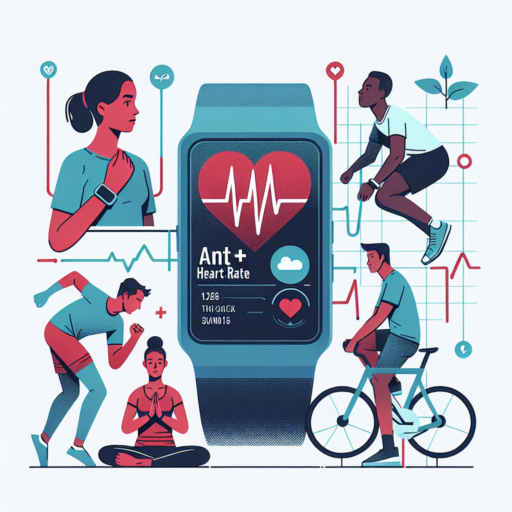Understanding Heart Rate Monitoring Devices
Heart rate monitoring devices have become integral tools for athletes, fitness aficionados, and health-conscious individuals aiming to understand their cardiovascular health better. These sophisticated gadgets offer insights into heart activity, enabling users to optimize their workouts, monitor health trends over time, and make informed decisions about their lifestyle and exercise regimes. With a myriad of options available on the market, from chest straps to wrist-based wearables, understanding the functionalities and benefits of these devices is paramount.
Accuracy and Functionality are at the forefront of considerations when exploring heart rate monitoring devices. Chest strap models, known for their closeness to the heart, typically provide the highest precision, capturing every heartbeat to offer a comprehensive view of heart rate behavior during various physical activities. Conversely, wrist-based devices, while offering convenience and ease of use, may sometimes trade-off a degree of accuracy for comfort and versatility. Regardless of the type, these devices use complex algorithms to process heart rate data, ensuring users have access to reliable information to guide their health and fitness goals.
The integration of heart rate monitors into personal training and health management plans has revolutionized the way individuals approach their fitness and wellness journeys. By tracking resting and active heart rates, users can identify patterns, recognize potential health issues early, and tailor their exercise routines to improve cardiovascular efficiency and overall fitness levels. Furthermore, many of these devices come equipped with additional features such as calorie tracking, sleep monitoring, and even stress management tools, offering a holistic overview of one’s health.
Types of Heart Rate Monitoring Devices You Should Know About
Keeping track of your heart rate is more than just a way to monitor your fitness levels; it’s a vital tool for identifying and managing various health conditions. With advancements in technology, the market is flooded with various types of heart rate monitoring devices, each serving a unique purpose and catering to different preferences. From traditional chest strap monitors to the more advanced smartwatches, selecting the right device can enhance your understanding of your heart’s health and improve your overall wellbeing.
Chest Strap Monitors
Chest strap monitors are renowned for their accuracy and reliability in heart rate monitoring. They work by detecting electrical signals generated by heartbeats and typically provide real-time data. Athletes and fitness enthusiasts often prefer chest straps because they stay in place during vigorous activities and connect seamlessly with other fitness equipment. However, some users might find them uncomfortable for everyday wear.
Wrist-Worn Devices
Wrist-worn devices, including fitness trackers and smartwatches, are celebrated for their convenience and versatility. Unlike chest straps, these gadgets measure the heart rate using optical sensors that detect blood flow. Their ease of use, coupled with the ability to track multiple aspects of health and fitness beyond heart rate, such as steps taken, calories burned, and sleep patterns, makes them a popular choice. It’s important to note, though, that their accuracy can vary depending on the device’s quality and how it’s worn.
Echoing the sentiments of health and fitness advocates, understanding the different types of heart rate monitoring devices empowers individuals to make informed decisions tailored to their lifestyle and health goals. Whether you’re a professional athlete requiring precise heart rate data or someone interested in maintaining general health, there’s a heart rate monitoring device suited to your needs.
Benefits of Using Heart Rate Monitors for Your Health
Utilizing heart rate monitors has become a widespread practice among individuals aiming to improve their health and fitness routines. These devices provide critical insights that can significantly enhance your wellness journey. By understanding the benefits that heart rate monitors bring to the table, individuals can make informed decisions about incorporating these tools into their lives.
Optimized Workout Efficiency
One of the key advantages of using a heart rate monitor is the ability to optimize your workouts. By tracking your heart rate in real-time, these devices allow you to adjust your intensity level to remain within your target heart rate zone. This ensures that each workout is as efficient as possible, whether the goal is to burn fat, improve cardiovascular health, or build endurance. Consequently, you can achieve your fitness objectives more effectively, making each exercise session count.
Enhanced Recovery Insights
Monitoring your heart rate doesn’t just benefit you during exercise; it also provides valuable insights into your recovery. A rapid decrease in heart rate after intense activity is generally a sign of good cardiovascular health. Conversely, a slower recovery rate might indicate the need for more rest or a reassessment of your current fitness level. By offering a clearer picture of your heart’s ability to recover, heart rate monitors help tailor your rest periods and workout frequency for optimal health benefits.
Beyond just individual workout sessions, heart rate monitors play a critical role in long-term health monitoring and planning. They help users recognize patterns over time, such as improvements in resting heart rate, which is a key indicator of enhanced cardiorespiratory fitness. By providing these long-term insights, heart rate monitors empower users to make more informed decisions about their health and fitness strategies, leading to better overall outcomes. Whether you’re a seasoned athlete or someone just starting their fitness journey, the benefits of integrating a heart rate monitor into your routine are clear and compelling.
How to Choose the Right Heart Rate Monitor for Your Needs
Choosing the right heart rate monitor is essential for anyone looking to track their cardiovascular health, improve their fitness level, or enhance their training sessions. With an array of options available, it’s crucial to consider your specific needs and objectives when selecting a heart rate monitor. Whether you’re a professional athlete, a fitness enthusiast, or someone with health considerations, finding the perfect device can greatly impact your physical well-being and training outcomes.
One of the first steps in selecting the ideal heart rate monitor is understanding the different types available. There are primarily two categories: chest straps and wrist-based monitors. Chest straps are known for their accuracy and consistency, as they closely monitor the heart’s electrical activity. On the other hand, wrist-based monitors offer convenience and comfort, making them ideal for daily wear and non-intensive workouts. Assess your workout regimen and decide which type of monitor aligns with your activity level and accuracy requirements.
Connectivity and compatibility with other devices is another significant factor to consider. Many heart rate monitors now offer Bluetooth or ANT+ compatibility, enabling you to sync data with your smartphone, smartwatch, or fitness app. This feature allows for detailed tracking and analysis of your heart rate patterns over time, providing invaluable insights into your health and fitness progress. When choosing a heart rate monitor, ensure it is compatible with your existing devices and meets your data analysis needs.
No se han encontrado productos.
Top Heart Rate Monitoring Devices of 2023
The landscape of health and fitness technology has evolved rapidly, with heart rate monitoring devices becoming an indispensable part of many individuals’ routines. The year 2023 has seen the advent of an array of sophisticated devices designed to offer unparalleled insights into one’s cardiovascular health. These devices not only track heart rate with precision but also come loaded with a variety of features to enhance user experience and promote a healthier lifestyle.
In the quest for the best heart rate monitoring devices of 2023, products from renowned brands like Garmin, Fitbit, and Apple stand out. Garmin’s latest offering boasts enhanced battery life and improved sensor accuracy, making it a favorite amongst outdoor enthusiasts. Fitbit continues to excel in integrating social fitness challenges, encouraging users to reach their health goals through competition and camaraderie. Apple, on the other hand, combines its heart rate monitoring capabilities with comprehensive health metrics, offering a holistic view of one’s well-being.
When considering a heart rate monitor, it’s crucial to evaluate the device’s compatibility with other fitness tools and apps. Many of the top contenders of 2023 seamlessly integrate with popular fitness applications, providing users with detailed analyses of their workouts and overall health trends. This integration is essential for those keen on maintaining a detailed log of their progress and those requiring data to tailor their fitness regimens precisely.
Integrating Heart Rate Monitors with Your Fitness Routine
Why Monitoring Your Heart Rate is Essential
When you integrate heart rate monitors into your fitness regimen, you are taking a pivotal step towards understanding your body’s response to exercise. Monitoring your heart rate allows you to measure the intensity of your workout, ensuring you are not pushing too hard or not enough. It’s an efficient way to gauge your endurance and cardiovascular strength, allowing for a tailored workout that meets your fitness goals while ensuring safety and health are prioritized.
Choosing the Right Heart Rate Monitor for You
With a plethora of heart rate monitors available on the market, selecting the right one can seem daunting. Key considerations include accuracy, comfort, and compatibility with other fitness devices you might be using. Whether it’s a chest strap model known for precision or a more convenient wrist-based device, the perfect heart rate monitor should fit seamlessly into your fitness routine, offering reliable data to help track your progress.
Effective Strategies for Integration
- Start by setting realistic goals based on your current fitness level and what you aim to achieve with your workouts. Use your heart rate monitor to ensure you’re exercising within your optimal heart rate zone.
- Incorporate interval training into your routine. Using a heart rate monitor helps in identifying when to push harder or lower the intensity, making your workouts more efficient.
- Keep a log of your heart rate data to track improvements over time. This historical data can be invaluable in adjusting your routine to continue meeting your evolving fitness goals.
Maintaining and Cleaning Your Heart Rate Monitoring Device
Keeping your heart rate monitoring device in prime condition is essential for ensuring accurate readings and extending its lifespan. The process of maintenance and cleaning isn’t complex, but it is crucial to follow the recommended guidelines to prevent damage to your device. Regular upkeep not only helps in providing precise heart rate data but also in preventing skin irritations that can occur due to dirt and sweat accumulation.
Cleaning Guidelines
Cleaning your heart rate monitor should become a part of your routine, especially if you use it frequently. Begin by detaching the device from the strap, if possible. Use a mild soap and water solution to cleanse the strap, avoiding any harsh chemicals that could degrade the material. For the device itself, a gentle wipe with a damp cloth should suffice. Ensure everything is dry before reassembling.
Storage and Care
Proper storage is equally as important as regular cleaning. Always store your heart rate monitoring device in a cool, dry place, away from direct sunlight. Extreme temperatures can affect battery life and sensor accuracy. Furthermore, ensure that the device and strap are thoroughly dry before storing to prevent any mildew or bacteria growth. Regular checking for signs of wear and tear, such as cracks or splits, can prevent unexpected failures during your workout sessions.
Maintenance of your heart rate monitor also includes periodic software updates, if applicable. Manufacturers often release updates that improve functionality and accuracy. Keeping your device’s software up to date ensures you’re getting the most out of your heart rate monitoring experience.
Advanced Features in Modern Heart Rate Monitoring Devices
The evolution of heart rate monitoring devices has introduced a plethora of advanced features designed to provide users with in-depth insights and a better understanding of their health. These modern devices extend far beyond the simple measurement of heart rates; they now incorporate sophisticated technology to offer a comprehensive health monitoring experience. From tracking activity levels to monitoring sleep patterns, the latest features enhance the overall utility of these devices, making them indispensable tools for health-conscious individuals.
Real-Time Heart Rate Analysis
One of the standout advancements in modern heart rate monitors is real-time heart rate analysis. Unlike previous generations that offered delayed feedback, current models provide instantaneous data, allowing users to adjust their physical activities on the fly. This feature is particularly invaluable for athletes and fitness enthusiasts who rely on precise heart rate data to optimize their performance and recovery. Moreover, the integration of machine learning algorithms has enabled these devices to predict potential health issues before they become significant problems, offering a proactive approach to heart health management.
Integration with Smart Technology
The seamless integration with smartphones and other smart devices is another key feature of contemporary heart rate monitoring devices. This connectivity allows users to receive notifications, set exercise goals, and even share their health data with healthcare providers directly from their wrist. Furthermore, some devices are equipped with GPS tracking, enabling users to map their runs and monitor their pace and distance in real-time. The fusion of heart rate monitoring with smart technology not only enhances convenience but also opens up new possibilities for personalized health management and motivation.
Advanced Sleep Monitoring
Understanding the importance of sleep in overall health, modern heart rate monitors have also incorporated advanced sleep tracking features. These devices can analyze sleep patterns, including the duration of REM and deep sleep phases, providing insights into sleep quality. Such detailed analysis helps users identify any sleep irregularities and make informed adjustments to their sleep hygiene, thus improving their overall health and wellbeing. With the assistance of advanced sensors and algorithms, these monitors offer a comprehensive view of one’s health, day and night.
Heart Rate Monitoring Devices: Price vs. Quality Comparison
When exploring the vast market of heart rate monitoring devices, the correlation between price and quality often becomes a primary concern for consumers. Navigating this landscape requires an understanding of what different price ranges offer in terms of features, durability, and accuracy. From budget-friendly options to high-end models, each price category comes with its own set of expectations regarding quality.
The Bargain Tier: What to Expect
In the lower price bracket, heart rate monitoring devices are surprisingly abundant. These models, typically priced under $50, offer basic heart rate tracking capabilities without the bells and whistles of their pricier counterparts. While affordability is a significant advantage, it is crucial to temper expectations regarding the device’s durability and the precision of the readings. Budget devices may serve well for casual users, but serious athletes or health enthusiasts might find them lacking in reliability and feature set.
Mid-Range Mastery
Devices that fall within the mid-range price segment, generally between $50 and $150, strike a commendable balance between cost and functionality. Consumers can expect a noticeable improvement in the accuracy of heart rate readings and the build quality. Additionally, mid-range models often incorporate additional features such as sleep tracking, smartphone notifications, and waterproof designs. For many, this price point represents the sweet spot, offering robust quality without venturing into luxury pricing.
Premium Picks: High-End Heart Rate Monitors
At the apex of the price spectrum lie the high-end heart rate monitoring devices, with prices soaring above $150. These models boast the highest quality in both build and technological sophistication. Users can anticipate not only precise heart rate measurements but also a host of advanced features like GPS tracking, detailed workout analytics, and extensive customization options. While the high cost can be a barrier, for those who demand uncompromising quality and cutting-edge features, the investment can be justifiable.
Understanding the relationship between price and quality in heart rate monitoring devices is essential for making an informed purchase. While higher prices often correlate with better quality and more features, it’s important to assess individual needs and priorities. Whether you’re a casual user looking for basic functionality or a dedicated athlete needing advanced metrics, the market has options across the spectrum to suit various preferences and budgets.
FAQs: Everything You Need to Know About Heart Rate Monitoring Devices
Heart rate monitoring devices have become indispensable tools for those looking to optimize their health and fitness routines. With an array of options available, it’s natural to have questions about how these devices work, their accuracy, and the benefits they offer. We’ve compiled some of the most common queries to help you understand the intricacies of heart rate monitoring devices.
How Accurate Are Heart Rate Monitors?
One of the most frequently asked questions pertains to the accuracy of heart rate monitors. Modern devices employ advanced technology, such as photoplethysmography (PPG) and electrocardiography (ECG), to measure your heart rate. While ECG-equipped devices, often found in medical settings, provide the highest accuracy, wrist-worn devices using PPG technology offer convenience and are generally accurate enough for fitness tracking and non-clinical purposes. Accuracy can also depend on the device’s fit, skin tone, and the activity being performed.
What Are the Benefits of Using a Heart Rate Monitor?
Using a heart rate monitor can bring a multitude of benefits, especially for those looking to improve their physical fitness. They enable users to track their heart rate in real-time, allowing for adjustments in workout intensity to maximize performance and improvement. Heart rate monitors can also aid in identifying heart rate zones that target cardiovascular improvement, fat burning, or endurance training. Additionally, they provide valuable data that can help in monitoring overall health and detecting potential irregularities early.
Choosing the Right Heart Rate Monitor
When selecting a heart rate monitor, consider your specific needs and the activities you’ll be using it for. Factors such as accuracy, type of measurements (continuous or spot checks), battery life, and additional features (like GPS, smartphone connectivity, or built-in workouts) should influence your decision. Whether it’s for casual fitness tracking, professional training, or health monitoring, there’s a heart rate monitor designed to meet your criteria. Always research and read reviews to ensure that the device you choose aligns with your goals and lifestyle.




